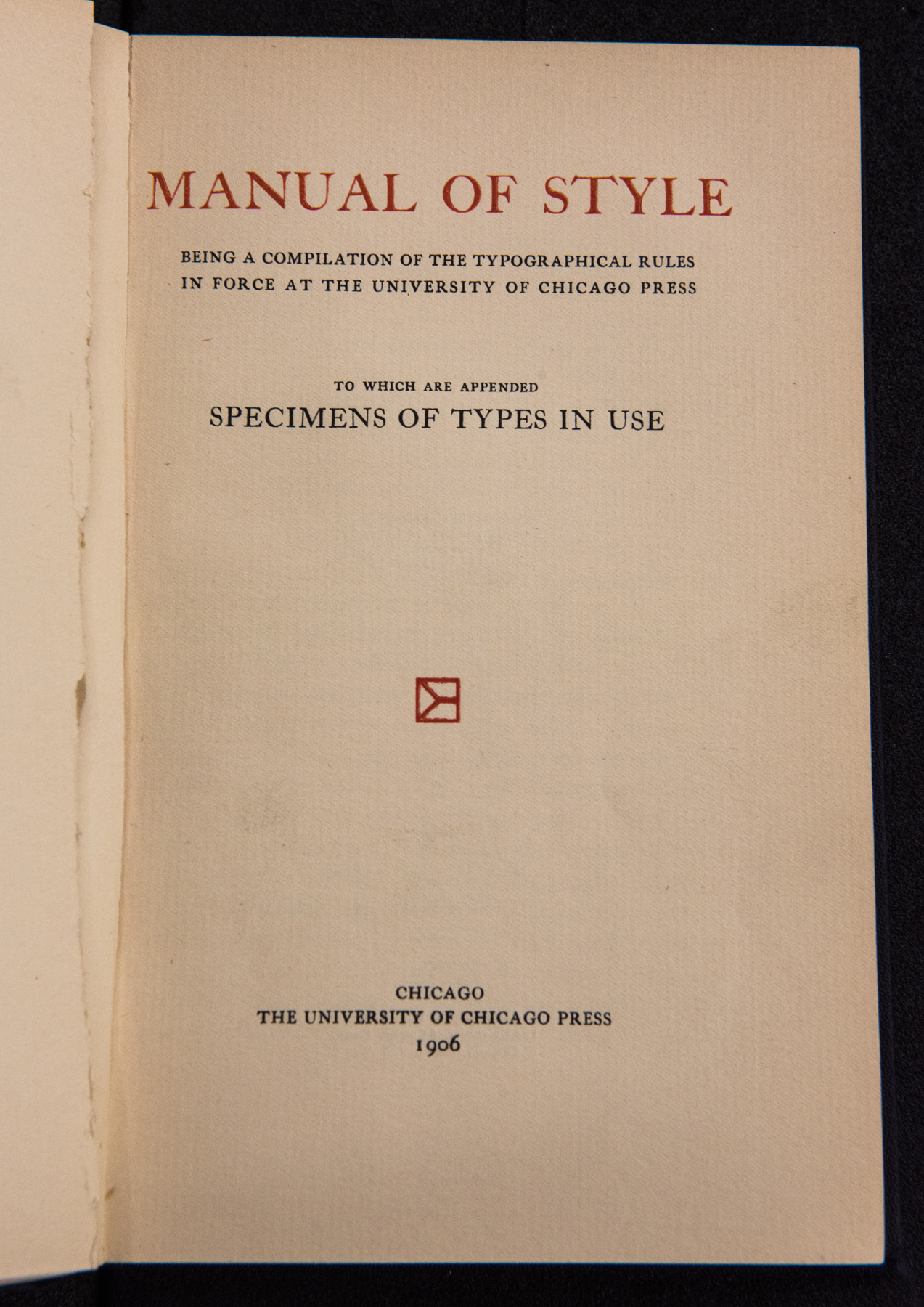UChicago News
In 1906, the University of Chicago Press published a 200-page book with the lofty title: Manual of Style: Being a compilation of the typographical rules in force at the University of Chicago Press, to which are appended specimens of types in use. In the last century, the title has shrunk, while the Manual’s guidance has only expanded in response to changes in publishing, technology and society. The 17th edition of The Chicago Manual of Style that will publish on Sept. 12 is 1,146 pages, providing writing and editing advice for everyone from authors to copywriters to students. The new edition accounts for such changes as the ubiquity of social media that occurred in the seven years since the last update.
“Advances in publishing technology drove the need for this edition,” said Carol Saller, an editor at the University of Chicago Press who writes the Chicago Manual of Style Online’s Q&A. “For instance, there’s a new section on PDF editing tools. And then there is social media: The word ‘Twitter’ doesn’t even appear in the previous edition, which came out in 2010, but now even the most scholarly journals need a citation style for it.”
In the early 1990s, updates to the Manual were fueled by the growth of desktop publishing. Then came the rise of the internet—not the “Internet” according to the new edition—in the 2000s. By the time the 16th edition was published in 2010, the iPhone and Kindle were changing the landscape once again.
The Manual itself also has changed. Dog-eared copies can be found on desks around the world, including Chinese and Spanish versions. But it’s also referenced nearly as much, if not more, through its online version. Along with the updates to the print version, an updated website for the Manual is being rolled out, with optimization for mobile devices soon to follow.
…
Read More


